faqs
have some questions?you’re not alone!
soft plastics
All plastic packaging including soft plastics (that you can scrunch in your hand) and rigid (hard) plastics can go in your recycling bin provided it is Clean, Dry & Loose. This includes all plastic films from your shopping, plastic bottles from milk, water and beverages; plastic tubs, containers and food trays; yogurt pots; soap, shampoo, conditioner and shower gel bottles. You can find a full list of items that can be put in your recycling bin in our A-Z Waste Management Guide or on Repak’s ‘What can I recycle?‘ page. Please place items in your recycling bin – clean, dry and loose.
A soft plastic is any type of plastic that you can scrunch in your hand. Soft plastics are now accepted in the recycling bin due to advancements in technologies at recycling facilities in Ireland. There are a wide range of soft plastics including: plastic wrap on products, plastic labels, plastic packaging pillows, bubble wrap, bread wrappers & pasta bags. You can find a full list of items that can be put in your recycling bin in our A-Z Waste Management Guide or on Repak’s ‘What can I recycle?‘ page. Please place items in your recycling bin – clean, dry and loose.
A rigid plastic is any type of plastic that does not lose its shape. Rigid plastics can go in your recycling bin. There are a wide range of rigid plastics you can recycle, including: plastic bottles from milk, water and beverage bottles; plastic tubs, containers and food trays; yogurt pots; soap, shampoo, conditioner and shower gel bottles. The colour of rigid plastics does not matter. You can find a full list of items that can be put in your recycling bin in our A-Z Waste Management Guide or on Repak’s ‘What can I recycle?‘ page. Please place items in your recycling bin – clean, dry and loose.
Soft plastics can now be placed in your recycling bin as there have been advancements in packaging design, and investment in recycling technology, allowing segregation of different material types in recycling facilities in Ireland. All plastics can now be placed in the household recycling bin once they are clean, dry and loose
You can continue to recycle your plastic items as before. The difference is you can now place your soft plastic packaging in the recycling bin. By doing this you are helping Ireland to achieve its increased packaging recycling targets set by the EU. Currently in Ireland we recycle 31% of all plastic packaging. By 2025 we will need to recycle 50% and by 2030 we will need to recycle 55%. Join us to help Ireland reach its plastic packaging recycling targets. You can find a full list of items that can be put in your recycling bin in our A-Z Waste Management Guide or on Repak’s ‘What can I recycle?‘ page. Please place items in your recycling bin – clean, dry and loose.
Plastic items placed in your recycling bin need to be clean, dry and loose. This means there should be no food or liquids left on/in your plastic items, and you should place all the items loosely in the bin and not in plastic bags or stuffed into other materials such as boxes.
There is no need to vigorously clean soft plastics. Once the plastic is free from food waste and is dry it can be placed in the recycling bin. Remember to place all items into the recycling bin clean, dry and loose.
Yes, bubble wrap is a soft plastic and is now accepted in your recycling bin. You can find a full list of items that can be put in your recycling bin in our A-Z Waste Management Guide or on Repak’s ‘What can I recycle?‘ page. Please place items in your recycling bin – clean, dry and loose.
Yes, plastic carrier bags are soft plastic and are now accepted in your recycling bin. You can find a full list of items that can be put in your recycling bin in our A-Z Waste Management Guide or on Repak’s ‘What can I recycle?’ page. Please place items in your recycling bin – clean, dry and loose.
Yes, crisp packets are considered soft plastic and are now accepted in your recycling bin. You can find a full list of items that can be put in your recycling bin in our A-Z Waste Management Guide or on Repak’s ‘What can I recycle?‘ page. Please place items in your recycling bin – clean, dry and loose.
Yes, sweet wrappers are a soft plastic and are now accepted in your household recycling bin. You can find a full list of items that can be put in your recycling bin in our A-Z Waste Management Guide or on Repak’s ‘What can I recycle?‘ page. Please place items in your recycling bin – clean, dry and loose.
Yes, plastic product wrapping such as the film found on a packet of toilet roll / new mattress is now accepted in your recycling bin. You can find a full list of items that can be put in your recycling bin in our A-Z Waste Management Guide or on Repak’s ‘What can I recycle?‘ page. Please place items in your recycling bin – clean, dry and loose.
After collection, soft plastics are brought to material recovery facilities (MRFs) in Ireland to separate the plastics into different polymers. If the plastic types are recyclable they will be sent to specialised, polymer specific recycling facilities. If they are not currently recyclable they will be sent as a Solid Recovered Fuel (SRF) to replace fossil fuels at Cement Kilns.
Yes, your chosen waste collector will be accepting soft plastics once they are placed in your recycling bin, clean and dry and loose.
While waste management planning, including with regard to infrastructure provision such as civic amenity sites, is the responsibility of local authorities under Part II of the Waste Management Act, 1996 (as amended), the Waste Action Plan for a Circular Economy, which was launched by Minister Ryan in September 2020, contains a commitment to formalise the role of civic amenity sites and agree a standard list of waste streams to be accepted at such sites. In this regard the Regional Waste Management Planning Offices, with support from the Department of the Environment, Climate and Communications, have recently published a National Review of Civic Amenity Sites, which is available online at here.
Discussions have commenced with the local authority sector on implementation of the report recommendations. This will allow civic amenity sites to play a greater role in our transition to a more circular economy through measures such as coordinated education and awareness programmes, greater use of reuse schemes, standardising a list of waste streams accepted at such sites and collective approaches to extended producer responsibility (EPR) schemes, and will assist in continuing to reduce the amount of waste disposed of to landfills.
recycling
Dry recyclables include paper and packaging that most household consumers generate by virtue of the food / goods they buy and use and bring into their houses every day. It includes metals, plastics and paper items.
These go into your recycling bin, which can be different colours in different parts of the country.
The list of dry recyclables accepted by waste collection operators in Ireland has been approved by the local authorities in each county and comprises the following categories of materials:
- Paper and Card
- Rigid and Soft Plastics
- Tins and Cans
While they are recyclable and many can be reused, they should not be placed in any of your household bins, drop them off at a bring centre / clothes bank or the local charity shop. Household waste materials recycling facilities are not geared up to segregate or recycle these items.
No, this was allowed in the past in some areas but as it frequently breaks into smaller shards it then contaminates paper and plastic in the bin making it harder to recycle these other materials.
Please collect it separately and drop it off at the local glass bank or Civic Amenity site for recycling. You can find your nearest location on the map.
If the box is free of food waste and only a small amount of grease on the box it can be put in the recycling bin with other paper and cardboard. But if it is heavily soiled put it in the food/ brown bin.
Make sure not to drop plastic or foil into the food waste / brown bin.
Yes, if it is clean and drip-dry. If it is heavily soiled with food / grease put it in the residual waste bin, this includes baked on food which may be very difficult to remove.
Yes, sweet wrappers are soft plastic and are now accepted in your household recycling bin. Remember to always place all items into the recycling bin loosely.
Yes, plastic carrier bags are soft plastic and are now accepted in your recycling bin. Remember to always place all items into the recycling bin loosely.
Don’t put this in your dry recyclables bin. You can place it in your residual waste bin or, if you have a lot, many Civic Amenity sites have a collection unit on site where you can drop it off at no charge.
If they are in good condition, your local charity shop may accept them but otherwise, discard in the residual waste bin.
All electrical retailers will take these back these items free of charge from householders, as will civic amenity sites.
Do not put them into any of your household bins.
These are deemed as hazardous waste in Ireland and should be brought to your civic amenity site for proper disposal.
Do not place in the residual bin.
In some areas your local pharmacy may take it back for disposal. Unfortunately, in some cases sharp medical waste such as needles end up on the picking line putting staff at risk of contracting infectious diseases.
Please do not place empty blister packs from tablets or pharmaceutical products in your recycling bin as they can be mistaken for hazardous pharmaceutical waste and cause a batch of material to be rejected by a re-processor.
So just drop these items in the residual waste bin. But it is OK to drop cleaned, empty
glass medicine bottles into glass banks.
Aerosols are generally pressurised cans like deodorant, air freshener or bug sprays.
These should be brought to your local civic amenity site and if this is not an option please place them in your general waste bin.
In Ireland, as per 2nd Schedule category 1 waste of The Waste Management Act, 1996, aerosols fall into the category of hazardous waste and therefore cannot be placed in the household recycle bin.
While most recycling centres have bag opening devices, it slows down the process very considerably and it is much better if you drop the items loosely into the recycling bin.
You can use a reusable bag to transfer the items between the kitchen and the bin.
No. This makes it difficult to separate them for recycling at the processing centres. Just drop them loose into the recycling bin.
Your waste provider can provide you with a second bin at minimal charge or you can compact the bin lightly to get more material in. In particular squash all items before placing in the bin i.e boxes or milk cartons so that they take up less space.
Unlike other countries, in Ireland we allow householders to place all their recyclables in the recycling bin together.
If wet items are placed in the bin they will cause any paper in the bin to get wet and this
impacts the ability to recycle it. If it is heavily contaminated with food it will attract rats and vermin to your bin and to the recycling centre and will cause smells – both in your garden and while in transit to the re-processor. In addition it may make the whole batch of material unfit to reprocess.
Drip dry will do fine. It’s just to make sure you don’t cause the paper in your recycling bin to become wet and soggy.
Tetra packs are all made to the same format and Tetra Pak has come up with a methodology to recycle packaging made from their products.
Coffee cups do not conform to a standard format and it’s a mixture of plastic and cardboard that at the moment we cannot recycle. Also, frequently people place them in the recycling bin still partially full of coffee or tea that again ruins the paper and cardboard in the bin.
No single use cup should be placed in your recycle bin
There may be residue in the cup which will contaminate other items, also sorting will take place mechanically and the machines cannot distinguish a recyclable cup from a regular cup.
The bin truck weighs your bin and then tips the contents into the back of the truck where it is compacted with other collected mixed recyclable material. When the truck is full it returns to the depot or the recycling centre where the bin lorry empties the mixed contents onto the reception hall floor and it is inspected to check if it is fit to process.
If it is, then it is loaded (using a loading shovel) into large containers that feed the separation machines. The separation unit, called a MRF (Material Recycling facility) has a number of processes that separate out each type of material collected into its individual ‘streams’ e.g. aluminium cans/trays, steel cans, paper and cardboard and the various types of plastics.
Most of the processes are automated but many operators also operate a picking line. This is where the materials collected are placed on a conveyor belt and people hand pick contaminated materials off the conveyor belt. It is very important that materials sent to re-processors are not contaminated as this will ruin the end products and may render the materials useless for recycling.
Unfortunately, there is no benefit to the environment when this happens as the load will be sent for disposal rather than being recycled.
The picking line is difficult and unpleasant job, so please don’t put non-recyclable material in your recycling bin.
Once the materials have been separated into individual ‘streams’ they are then baled into large cubed bales (about 1 tonne each). These are stacked in a warehouse until a full shipment is ready, (typically 22 tonnes). The bales are then loaded into shipping containers for transfer to a re-processor that specialises in recycling each type of material:
- paper and cardboard goes to a paper mill that makes new paper;
- plastic drink bottles are recycled back into plastic flake that is reused to make padding for duvets and jackets,
- aluminium cans are sent to aluminium smelters to make new Aluminium.
Diverting these items from landfill to recycling is good for the environment and will benefit future generations as we consider our planet more carefully.
home composting
Home Composting is a natural process of decomposition that turns garden materials and vegetable food scraps into a dark, crumbly and earthy smelling material called compost. Compost is rich in nutrients and full of life and when used in your garden and on your plants, feeds the ecosystem of the soil and slowly releases nutrients that plants can absorb. Using compost is the foundation of maintaining healthy soil for stimulating all plant growth and creating a beautiful garden.
Even if you don’t have a garden, you can still compost. You might have access to a communal green area where your compost can be used or, with some of the new systems now available for city dwellers, you can make your own and use it for your indoor plants.
Visit stopfoodwaste.ie for information on composting including the many different compost systems that are used in Irish homes today.
Almost all composting systems should be shaded from the sun to prevent them from drying out. Ground-based compost piles and bins should ideally be placed on bare soil to allow beneficial organisms to gain access to your bin. But, with the right mix of greens and browns, they will work anywhere, albeit a little more slowly if not on soil. A wormery should be placed in the shade and can be kept in a shed to protect it from extreme weather conditions, and a Bokashi system can be kept in the kitchen. A Green Cone, unlike most other systems, needs to be in a warm sunny spot.
In slow, cold composting conditions, weed seeds and tough plant parts will survive. To avoid releasing these in your garden, it is best to pick weeds before they go to seed, and to avoid adding roots or stems from docks, briars, bindweed, ivy or other noxious, perennial weeds.
In a hot composting pile, seeds and chopped-up vegetation will be killed by the high temperatures in the middle of the pile, but maintenance of high temperatures requires some management and manual turning of the composting material.
If you have lots of weeds, it’s best to create a dedicated pile in a sunny spot and cover with black plastic. This should dry and heat the weeds enough to kill them.
Follow all of the essentials of composting that can be found in the compost booklet, including chopping things up into smaller pieces, properly balancing of “green” and “brown” materials, turning the pile to add air or fluffing it up to encourage passive aeration, and making sure that materials are moist but not waterlogged to promote optimal composting.
In rainy Ireland, covering your composter is a great idea. During the winter, a cover stops the materials becoming waterlogged. In summer months, covering the pile keeps moisture in. While many composters come with lids, open piles should be covered with plastic, old carpet, plywood or anything else that works for you.
Flies are attracted to rotting food on top of your compost. To avoid this, mix and bury your food waste within the existing material in your composting system, or add a layer of brown materials such as leaves, shredded paper, or sawdust on top of each layer of food waste.
If the problem persists, leave the lid off for 2-3 hours on a sunny day and then place a layer of wet newspaper on top of the composting materials to create a physical barrier and replace the lid.
Ashes should not be added to compost systems because they fill in air spaces and can suffocate your compost. More importantly, they are alkaline in nature and would upset the near neutral pH balance of the compost.
However, they do contain potassium, a valuable plant nutrient, and can be directly added to acidic soils at planting time to help increase fertility. Wood and peat ash are safest. Coal ashes may contain heavy metals and other toxins so they should not be used for gardening.
Wastes from plant eating pets, such as horses, rabbits, gerbils, hamsters, guinea pigs or birds, can be safely composted at home. Just remember that all pet manures are “green” materials, high in nitrogen so they need to be balanced with “brown” materials.
Waste from meat eating pets such as cats or dogs should not be composted for use in the garden because of the potential to spread disease.
There are a few of reasons why your compost may smell, including:
- The compost is too wet due to being exposed to rain
- It contains too high a proportion of “green” materials such as grass clippings and food scraps.
- It contains food scraps containing animal products such as meat, fish, skins or dairy products.
In the case of the first two the solution is similar – turn the compost and add some drier “brown” materials and mix thoroughly. If the compost is getting wet due to rain then make sure to cover it.
If you are putting meat or other materials of animal origin into the food scraps to be composted, these could be causing the smell. Collect only vegetative kitchen scraps for composting and consider using a Green Cone system or brown bin collection service for non-vegetative foods.
No, not necessarily. Many bins work by simply adding materials to the top while harvesting materials out of the bottom. Turning allows you to add air and, if necessary, moisture to speed up composting. If the opening of the compost bin is too narrow to turn the pile, simply lift the bin up off the compost, place it next to the compost materials and turn them back into the bin. For larger piles, placing a perforated pipe on the ground when starting off can promote both passive aeration and drainage if necessary.
Finally, you can purchase a spiral compost mixer that acts like a giant corkscrew to mix things up in a narrow, stationary bin.
Worms naturally make their way to the lid of the compost bin so don’t worry – they will make their own way back down when they want to. The fact that there are worms in your bin is a very good sign.
Simple answer- yes they can be, but not if you manage your composting system properly.
There are two reasons why rats are attracted to compost. The first is food. Vegetative food scraps that are easily accessible (i.e. have not been buried within the composting material) or high protein scraps such as meat, fish, bones or cheese will attract rodents looking for something to eat. The second is that compost piles can be a warm and dry home for nesting, especially in winter months. If you find that rats are nesting in your bin, you can simply turn the pile to disrupt nesting behaviour.
To discourage rats from getting in your compost system, bury all vegetative food scraps within composting garden materials, avoid composting foods of animal origin and place the bin on a surface they can’t burrow under like hard plastic or thick wire mesh.
This depends on the system you are using, the type of materials you are trying to compost, and whether or not you are following all of the essentials of composting. In general, holding systems take longer than turning systems. You can expect that any materials you add to a holding system in one gardening season would be ready the following year. For turning systems, compost can be ready in as little as 8 weeks.
For wormeries, compost can be harvested in 6-12 months for a box (harvest entire contents at once) or in 1-2 months for a stackable wormery (harvest small amounts at a time). Proper use of Bokashi should speed up the decomposition of food scraps in your composting or burial system too.
incentivised charging
In June 2017 the Government made a decision to phase out flat fees for household waste collection. Over the period Autumn 2017 to Autumn 2018 all household customers should be moved to pricing plans which includes a charge based on usage when they go to renew their contracts.
By October 2018 all household customers should have transitioned from flat fees.
A flat rate fee is when a customer pays a single agreed price for waste collection. The payments can be monthly quarterly or annually. This does not change no matter how many times the bins are put out for collection or how heavy the bin is.
No matter how much or how little you create, you pay the same price for collection.
Only if you are currently on a flat rate charge bin collection service. More than half of Irish households will not be affected by the changes as they are already using a pay by weight system or pay each time their bins are collected.
The Government has not introduced any changes to recycling or organic/food bin charges.
These charges depend on your service provider. Some collectors charge separately for them, and some collectors bundle them in your collection fees.
Since September 2017, when you are renewing your contract, you should be offered a plan which includes:
- A charge based on usage (e.g. per-lift, per-kilogramme)
- Weight-band or weight allowance when you go to renew their contract.
Most companies also charge a set amount for standing/service charges.
It depends when your current flat rate contract runs out. The first thing you should do is contact the company who collect your bins now and ask them when they plan to change. That way you can plan ahead.
Yes, that is currently the case.
It is open to a bin collector to change the service pricing plan within the bounds of consumer and contract legislation. You should keep in contact with your service provider and do everything you can to reduce your waste in order to control costs and help the environment.
The Minister has put in place a Price Monitoring Group to track monthly pricing developments in the market. The group comprises representatives from:
- Waste Policy & Resource Efficiency Division
- An economist from the Department of Communications, Climate Action and Environment,
- A statistician from the Central Statistics Office.
- Shelfwatch – an independent price monitoring group and
- Frank Conway, an independent consumer expert (Chairperson).
In addition, the Tánaiste and Minister for Business, Enterprise and Innovation, have asked the Competition and Consumer Protection Commission (CCPC) to conduct a study on the operation of the household waste collection market.
The CCPC has indicated that it hopes to finalise the study in early 2018. The results from the Household Waste Collection Price Monitoring Group will be monitored and analysed and in conjunction with the study being undertaken by the CCPC, provide an evidence base regarding future monitoring or the potential need for additional regulation of the waste market.
Research shows that you generate significantly less waste by using one of these options. Therefore, the Government believes that the new system will help prevent greater waste problems for future generations while at the same time it can help you to control your own bin costs. It can potentially save households money and it will help us to deal with the growing problem of landfill waste. Those, who are already recycling as much as they possibly can, cannot continue to pay for everyone else.
We have to try to educate people and make individuals responsible for the waste they generate. Waste has an environmental and economic impact on our country and our planet. If you are doing all that you can in your household, perhaps you can help others to follow your example.
food waste
Kitchen Food Waste
You can put any raw or cooked food into your food waste recycling bin, such as:
- Meat, poultry and fish, including bones
- Leftover food from your plate and dishes
- Fruit & vegetables
- Tea bags, coffee grinds & paper filters
- Breads, cakes & biscuits
- Rice, pasta & cereals
- Dairy products (cheese, butter, yoghurt)
- Soups & sauces
- Eggs, egg shells & cardboard egg boxes
- Food soiled paper napkins & paper towels
- Newspaper (when used for wrapping food waste)
- Out of date food with packaging removed (no glass/plastic)
Some waste contractors accept grass clippings and small twigs in your large food waste recycling bin.
Check with your waste collector.
No Thanks
Please do not put any of the following materials into your caddy:
- Plastic bags/bottles
- Packaging of any sort
- Nappies
- Glass
- Stones/soil
- Metals cans/wire
- No cardboard
- Ashes, coal or cinders
- Pet faeces or litter
- Cooking oils
IF IN DOUBT PHONE AND FIND OUT – contact your waste collection company.
The food waste recycling bin is a bin to put all your food waste into. The contents of this bin are taken by your waste collector to a composting facility, where it is used to produce a high quality compost.
Some waste collectors are providing householders with two containers – a kitchen caddy to keep indoors for convenience and a larger bin to keep outdoors.
The “kitchen caddy” is a small lidded bin which you can keep in your kitchen to collect food waste. When the caddy is full, you can empty it into the larger food waste recycling bin (usually 20 litres or 120 litres in size), which you keep outdoors.
You may be provided with one of these bin types, or both.
Yes you can.
Any type of food waste can be placed in this bin.
See Question “What can I put in my Food Waste Recycling Bin?” for a full list of materials.
No, if you empty your kitchen caddy regularly into the outside food waste recycling bin. The outside food waste recycling bin is collected every two weeks by waste collectors.
We recommend lining your caddy with newspaper to stop the food sticking and to absorb any excess liquids. If you prefer, you could purchase compostable plastic liners instead of using newspaper. We would also advise rinsing your bin and caddy occasionally with warm water. These basic housekeeping measures should ensure that your bin and caddy do not smell.
A food waste recycling bin is provided to ensure waste food is collected separately so that it can be used to make high quality compost for use as a soil improver in agriculture and horticulture.
Also in Ireland, there are new food waste recycling bin Regulations [European Union -Household Food Waste and Bio–Waste-Regulations 2013], which now make it law that householders have to either use a food waste recycling bin, bring food waste to a local recycling centre or compost at home.
Food waste can no longer be placed in the general waste/landfill bin.
Yes you can.
Your home composting bin can still be used for uncooked vegetables and fruit peelings. However you cannot place raw meat/cooked meats into your home composter.
But remember, you cannot place food waste into your general waste bin.
No.
Plastic liners are made from petrochemical plastics, which do not break down at the composting facility and contaminate the process. Please remember that if plastic is found in your food waste recycling bin, your bin will not be emptied and a contamination tag will be placed on your bin to inform you of this.
However you can use compostable bags, or, newspaper. The newspaper will absorb any liquid and is completely compostable. If you would prefer to use compostable bags, please use bags which are 100% compostable and show the compostable logo (EN13432).
Once your food waste recycling bin into the collection trucks, the contents are taken to a dedicated composting plant where it is specially treated and turned into high quality compost that can be used on gardens, in landscaping projects and on fields.
Your waste collector checks each food waste recycling bin before he empties it into the collection truck. If he finds anything in your bin that cannot be composted, such as plastic, he cannot empty it and will attach a tag to the bin telling you it was contaminated. If this occurs, you are advised to check the contents of your bin and remove any contamination. You can then present your bin for the next collection as usual.
- Saves money: The average family wastes €50 per month on discarded food. By using your food waste recycling bin you will become more aware of the food you waste, helping to save you money.
See www.stopfoodwaste.ie for tips to reduce food waste.
- Avoiding fines: Under the food waste recycling bin Regulations, the onus is on the householder to separate their food waste from other waste in the home and either:
- use a food waste recycling bin,
- bring food waste to a local recycling centre, or
- compost at home.
Failure to use the food waste recycling bin may result in a fine being issued to you by your local authority. All bins are now micro chipped so it is easy to see what households have and have not used it, leaving themselves open to penalties for not using it.
- Better for the environment: When food waste is disposed of in a landfill, it produces methane gas as it breaks down. Methane is a harmful gas which is a key contributor to climate change. Diverting food waste away from landfill will significantly reduce methane levels in our environment. By sending that food waste to a composting plant instead, a high quality compost is produced that can be used in landscaping, gardening and agriculture.
It is a requirement under the Irish food waste recycling bin Regulations that a collector provides a fortnightly collection service.
The rationale behind the collection of this waste type on a fortnightly basis is to ensure there are no odour issues for the householder and that the food waste recycling bin material undergoes the best possible treatment at a composting facility. It is more difficult to compost this material if it is left too long before collection.
WEEE
WEEE stands for ‘Waste Electrical and Electronic Equipment’. WEEE is end-of-life electrical and electronic equipment – in simpler terms, it is anything with a plug or a battery! WEEE can range from old or broken fridge-freezers, washing machines, TVs, toasters and kettles, electronic tools and children’s toys, to smaller items such as mobile phones, cables, remote controls and even watches!
There are many reasons as to why you should recycle your WEEE! By doing so, you are reducing the amount of waste going to landfill. Recycling your WEEE rather than dumping it means that valuable resources such as metals, glass and plastics can be used again in new products resulting in less mining of raw materials.
Lots of electronic goods also contain hazardous materials like heavy metals such as lead and mercury and dangerous gases like CFCs and HGFs which can cause serious environmental damage and can also cause harm to human health. By recycling your WEEE, you are helping to protect nature and human health whilst contributing to the fight against climate change and ozone layer depletion!
Even items as small as household batteries can be dangerous if they are not properly disposed of. Some batteries can contain potentially hazardous materials such as mercury, cadmium and lead, which are the main cause for environmental concern. If waste batteries are not disposed of correctly, these heavy metals may leak when the battery corrodes, and so can contribute to soil and water pollution and endanger human health.
There are many locations around the country where you can recycle your WEEE. You can visit our Interactive Map to find your closest drop off point or civic amenity site.
Your household waste electrical items can be recycled in any Civic Amenity site/Recycling Centre around Ireland. This recycling service is free-of-charge for members of the public wishing to recycle their household WEEE.
All retailers of electrical equipment are also obliged to take back WEEE of a similar type on a one-for-one, like-for-like basis, free of charge. As well as this, certain electrical retailers are partaking in the ‘We’ll Take It Back’ campaign – meaning they will take back your household WEEE free-of-charge with no purchase necessary.
There are many locations around the country where you can recycle your WEEE. You can visit our Interactive Map to find your closest drop off point or civic amenity site.
Your lightbulbs can be recycled in any Civic Amenity site/Recycling Centre around Ireland. This recycling service is free-of-charge for members of the public wishing to recycle their waste light bulbs.
At collection, WEEE is segregated into ‘families’ which are then sent for specific depollution and treatment processes in Ireland to divert hazardous material from landfill and from harming the environment and human health.
WEEE then undergoes multi stage recycling processes to break them into fractions of material e.g. glass, metals, plastics which can be used again in manufacturing.
Under the WEEE and Battery Directives there are targets for recovery rates and recycling efficiencies of these waste streams. WEEE Ireland strive to reach and exceed these targets every year and we report annually on the achievement of these targets.
Electrical retailers must take back products on a like-for-like basis. However, several Irish retailers have signed up to the We’ll Take It Back Electrical Retailer Programme, meaning they will accept household e-waste with no purchase necessary, operating as free household e-waste recycling drop-off point. These electrical retailers include all stores/branches of Curry’s, DID, Expert, Euronics, Harvey Norman, PowerCity and Soundstore nationwide.

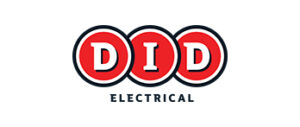
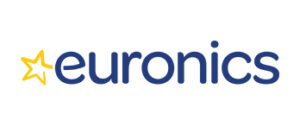
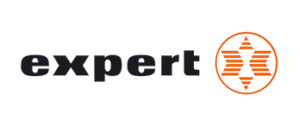
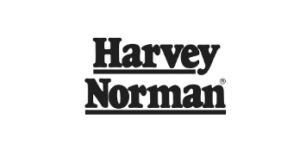
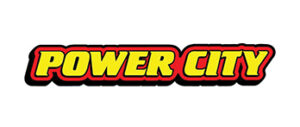

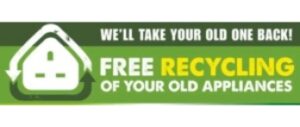
household hazardous waste
Hazardous waste is generated by all sectors of Irish society, from large industry, healthcare to small businesses, households and farms. Many everyday items contain hazardous components, which can affect human health if used incorrectly or the environment if disposed of incorrectly.
Look for the words Danger, Warning, or Caution on the product label. “Danger” warnings are found on extremely hazardous products. “Warning” and “Caution” indicate less hazardous products. Products without warning labels are least hazardous. A hazardous product can be toxic, flammable, corrosive, or reactive or any combination of these.
- Toxic indicates a poisonous product which can cause illness. Pesticides, paint thinners, auto products and some cleaners are toxic. Look for warning labels like: “Harmful or fatal if swallowed” “Use only in well ventilated area” (this means the product’s fumes are toxic)
- Flammable indicates a product which can catch fire spontaneously or burn easily. Paint, thinners, solvents, and auto products are the most flammable home products. Look for warning labels like: “Do not use near heat or flame” “Combustible” “Do not smoke while using this product”
- Corrosive indicates the product can cause a chemical reaction which will eat through materials or living tissue. Oven cleaners, drain cleaners, toilet bowl cleaners and auto batteries are common corrosive products. Look for warning labels like: “Causes severe burns on contact” “Can burn eyes, skin, throat”
- Reactive indicates the product can react with air, water or other substances to cause rapid heating or explosions. Acids that heat up rapidly and splatter when mixed with water are examples
Some examples of of the materials classified above are but definitely limited to:
- Corrosives – Batteries, auto batteries, bleach and drain cleaners
- Toxic Materials – Adhesives, ammonia, antifreeze, cleaning fluids, disinfectants, photographic chemicals, solvents and fire extinguisher contents.
- Flammable Products – Barbecue starters, compressed gas cylinders, gasoline, lighter fluid, paints and stains, propane tanks, turpentine and motor oil.
- Reactive Materials – Aerosol cans, pool chemicals
These items must be treated correctly. Check the map to see if your local civic amenity site collects this waste. Currently, not all civic amenity sites accept household hazardous waste so special one day collections are hosted every year rotating across all the local authorities over a three-year cycle. Keep an eye on local media for these special collection days.
- Keep materials in their original containers, or ensure that the containers are clearly labelled.
- Do not mix different products together.
- Tightly cap all containers.
Once dropped off at the collection events, hazardous waste is transported for further processing. Here is what happens:
- Paint is reprocessed into new recycled paint and by-products are bulked and sent for fuel blending.
- Stains, non-paint coatings, aerosols, fuels and adhesives are bulked and sent for fuel blending.
- Acids and bases are neutralized and discharged once tested.
- Pharmaceuticals, pesticides, batteries, and oxidizers are sent to a secure landfill.
- Automotive batteries are dismantled and lead is reclaimed and the sulfuric acid is neutralized.
- Oil is sent to a refinery to make recycled oil.
Never mix different products together. Hazardous and Special waste materials can catch fire, react or explode when mixed with other substances, if it’s corrosive or toxic. Keep materials in their original containers or ensure containers are clearly labeled.